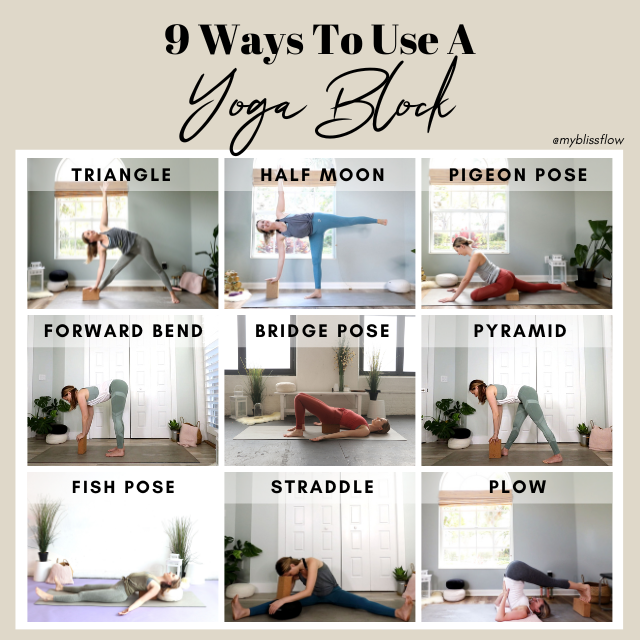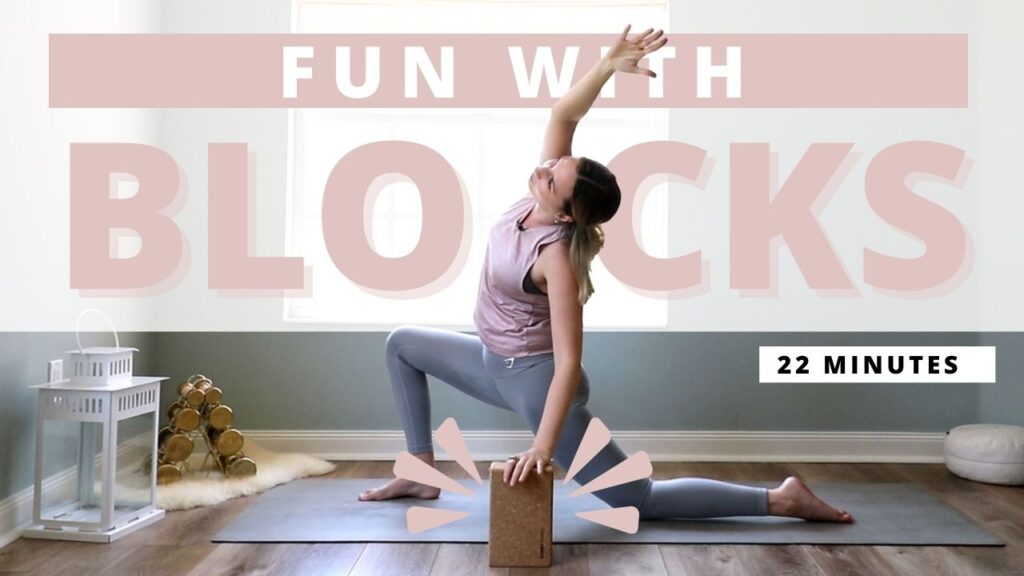Yoga blocks are one of the most versatile props in yoga practice and can be used by practitioners of all levels to deepen their practice and explore new postures. From beginners to advanced yogis, blocks offer a wide range of benefits that can help improve alignment, increase flexibility, and enhance overall yoga practice. In this blog post, we’ll explore why and how to use yoga blocks in your practice, including how they can help beginners and advanced yogis alike.
Why Use Yoga Blocks?
Yoga blocks can help support and deepen yoga postures, making them accessible to practitioners of all levels. Here are some of the key benefits of using blocks:
- Support: Yoga blocks can help support the body in various postures, providing stability and helping to prevent injury.
- Alignment: By using yoga blocks, practitioners can improve alignment and move deeper into postures, without sacrificing form or risking injury.
- Flexibility: Yoga blocks can be used to provide additional support for tight muscles, helping to improve flexibility and mobility over time.
- Challenge: For more advanced practitioners, yoga blocks can be used to create more challenging variations of traditional postures, helping to deepen the practice and increase strength and flexibility.
New on YouTube: Fun with Blocks
Click here to practice with me!
How to Use Blocks?
Yoga blocks can be used in a variety of ways, depending on the practitioner’s level of experience and individual needs. Here are some of the most common ways to use yoga blocks:
- Support: Blocks can be used to support the hands, feet, or hips in various postures to provide stability and allow the practitioner to focus on alignment and breathing. Beginners can use yoga blocks to provide additional support and stability in various postures, helping to prevent injury and build confidence.
- Height: Blocks can be used to create more height in seated or standing postures, allowing the practitioner to move deeper into the posture and explore different variations.
- Alignment: By using yoga blocks, beginners can improve alignment and move deeper into postures, without sacrificing form or risking injury.
- Flexibility: Blocks can be used to provide additional support for tight muscles, helping beginners to improve flexibility and mobility over time. They can help advanced yogis to create deeper stretches and challenge the body in new ways.
- Challenge: For more advanced practitioners, blocks can be used to create more challenging variations of postures. Examples are arm balances or inversions, by providing additional height or support.
Examples of how to use a Yoga Block
 Triangle Pose
Triangle Pose
Place a block on the ground, next to the front foot, to provide support for the hand and allows you to focus on alignment and breathing.
Pigeon Pose
Place a yoga block under the hip or forehead to provide support and help you to relax into the posture.
Camel Pose
Place a block between the feet to provide support and helps you to lift your chest and deepen the posture.
Extended Side Angle Pose
Place a yoga block under the hand to provide support and allows you to extend your arm fully in the pose.
Bridge Pose
Place a block under the sacrum to provide support and helps you to lift the hips and engage the glutes.
Seated Forward Fold
Place a yoga block under the knees to provide support and helps you to relax into the posture and deepen the stretch.
Chair Pose
Place a block between the thighs to provide support and helps you to engage your core and quads.
Tree Pose
Place a block under the foot to provide support and helps you to balance and extend your leg fully in the pose.
Pyramid Pose
Place a block under the hand to provide support and helps you to focus on alignment and breathing in the posture.
Supported Fish Pose
Place a block under the upper back and shoulder blades to provide support and helps you to open the chest and deepen the pose.
Overall, yoga blocks are a versatile and essential tool for practitioners of all levels, providing support, alignment, and challenge in a variety of postures. By using yoga blocks in their practice, practitioners can deepen their understanding of postures and improve their overall yoga practice.

